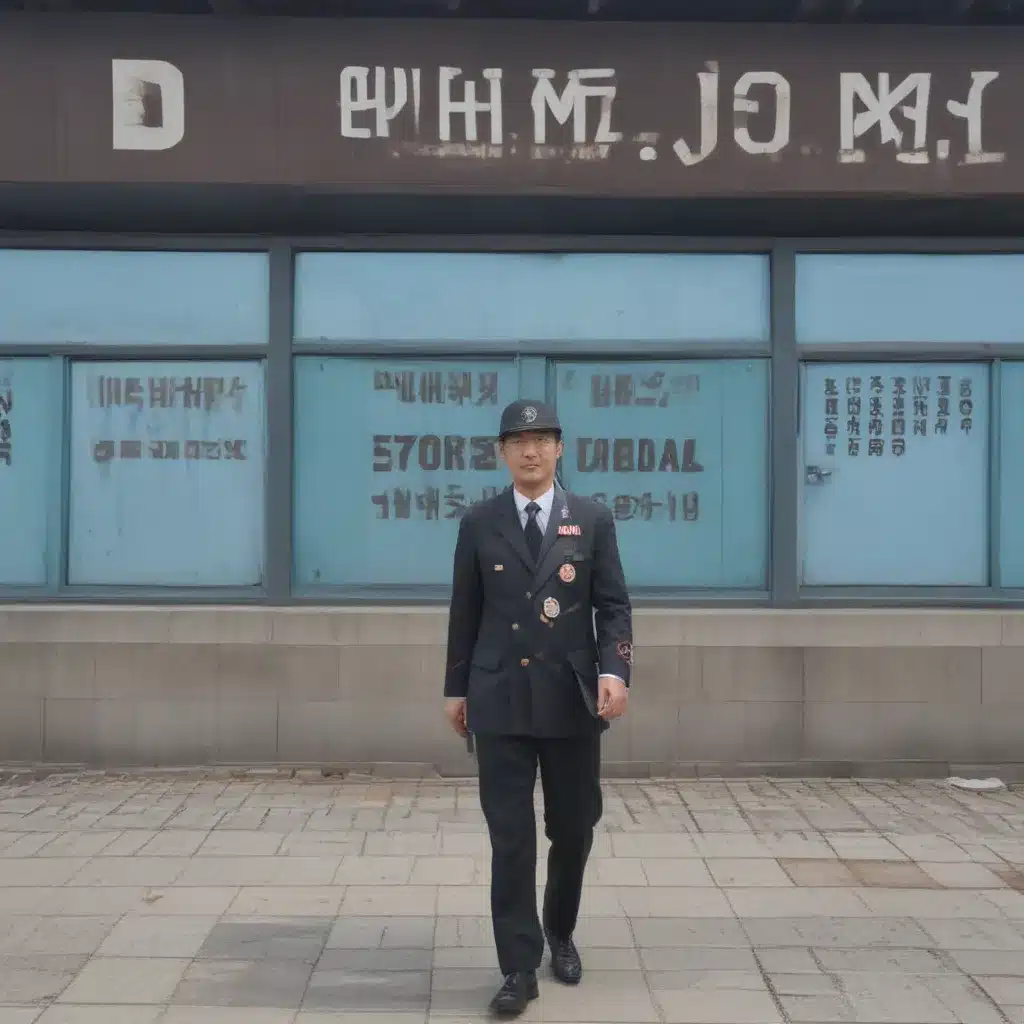
Venturing Into the Heart of the Korean Divide
As I stepped through the military checkpoint, my heart raced with a mix of excitement and trepidation. The air carried a distinct chill, not just from the brisk autumn weather, but from the palpable tension that hung in the atmosphere. I was about to embark on a journey to the Demilitarized Zone (DMZ) and the Joint Security Area (JSA), the epicenter of the ongoing political standoff between North and South Korea.
My Yonsei University mentor, a local guide with an infectious enthusiasm, ushered our small group through the formalities. We had our passports thoroughly inspected, and the weight of the situation began to sink in. This wasn’t just another sightseeing tour – we were venturing into a delicate geopolitical landscape, one that had long captivated the world’s attention.
Confronting the Realities of the DMZ
As we entered the DMZ museum, the mood shifted from apprehension to cautious optimism. The exhibit presented the history of the division in a surprisingly balanced manner, focusing not only on the tensions but also on the hope for eventual reunification. I was struck by the visual contrast – the serene natural landscapes that thrived within the DMZ, juxtaposed with the military fortifications and the ever-present reminders of the ongoing conflict.
As I learned from the museum’s informative video, the DMZ was initially established as a buffer zone to prevent further hostilities after the Korean War. Yet, over the decades, it had become a surreal no-man’s-land, a place where nature had reclaimed the land and wildlife had found a safe haven, undisturbed by human interference.
Descending into the first of the four infiltration tunnels built by North Korea, I felt a palpable sense of unease. The claustrophobic corridor, carved through solid rock, served as a stark reminder of the ever-present threat of aggression. As I peered through the small opening at the end, the lush greenery of North Korea came into view, a mere stone’s throw away. It was a sobering moment, a tangible manifestation of the fragility of the peace that has prevailed on the Korean peninsula.
Glimpsing the Other Side at the JSA
Our next stop was the JSA, the iconic location where the Armistice Agreement was signed in 1953, effectively ending the Korean War. As we approached the stark, military-controlled buildings, the atmosphere grew even more tense. Our guide cautioned us to remain vigilant and adhere to the strict protocols, lest we inadvertently provoke a response from the North Korean soldiers who stood watch just across the line.
Stepping into the conference room, where representatives from both sides had once sat face-to-face, I couldn’t help but feel a sense of awe. The room itself was unremarkable, yet the weight of history seemed to permeate every inch of the space. I imagined the delicate negotiations, the tense silences, and the precarious balancing act that had taken place here, all in the pursuit of maintaining a fragile peace.
From the Dora Observatory, we peered out toward the North Korean side, straining to catch a glimpse of the elusive communist state. The fog and haze obscured much of the view, but the fluttering North Korean flag was a constant, haunting reminder of the division.
Reflecting on the Complexities of Korean Politics
As we made our way back to the bustling streets of Seoul, I found myself grappling with the weight of the experience. The DMZ and JSA tour had not only presented a physical journey but also a deep dive into the intricate web of Korean politics, a testament to the enduring legacy of the Cold War.
I couldn’t help but marvel at the resilience of the Korean people, who have navigated this delicate situation with a remarkable combination of pragmatism and hope. From the Dragon Hill Lodge, where I had been staying, to the charming neighborhoods of Hongdae, the vibrancy of Seoul stood in stark contrast to the somber atmosphere of the DMZ.
Yet, the tour had also left me with a newfound appreciation for the complexities that underlie the political landscape. The division of the Korean peninsula is not just a historical footnote, but a living, breathing reality that shapes the everyday lives of millions. The desire for reunification, though ever-present, is tempered by the realities of power dynamics, ideological differences, and the looming threat of conflict.
As I reflected on my experience, I couldn’t help but feel a sense of hope, tinged with a touch of uncertainty. The DMZ and JSA tour had not only broadened my understanding of Korea’s political landscape but had also challenged me to consider the nuances and the human stories that lie beneath the surface. It was a journey that had left an indelible mark on my mind, one that I knew would continue to shape my perspectives long after I had returned home.
Embracing the Spirit of Reconciliation
In the end, the DMZ and JSA tour had not only been an educational experience but also a deeply personal one. I had come face-to-face with the tangible realities of a divided nation, yet I had also witnessed the resilience and the hopeful spirit of the Korean people.
As I bid farewell to the Dragon Hill Lodge and prepared to embark on the next chapter of my journey, I couldn’t help but feel a newfound appreciation for the fragility and the strength of the human condition. The DMZ and JSA had become more than just a tourist destination; they had become a symbol of the ongoing struggle for peace and reconciliation, a testament to the enduring power of the human spirit to overcome even the most daunting of obstacles.
And so, with a renewed sense of purpose and a deeper understanding of the complexities that shape the Korean peninsula, I set out to explore the rest of Seoul, eager to uncover more of the stories that lie beneath the surface of this captivating and enigmatic country.

